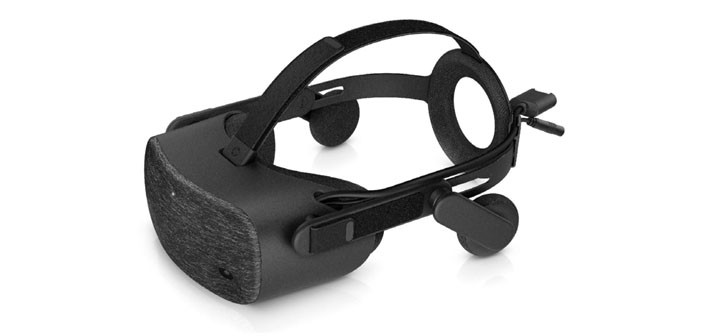The last month has been full of surprises regarding the VR/MR industry, as various companies announced and launched new headsets. Facebook seems to be taking the consumer route with both the Oculus Quest and the Oculus Rift S. After the success with the HTC Vive, Valve finally decided to tease their own VR Headset, the Valve Index. However, other than Varjo’s headset announced back in February, what about VR headsets for the commercial industry?
HP’s new VR Headset
HP recently announced a new VR Headset, the HP Reverb, for consumers, along with a Pro version for the enterprise. As part of Microsoft’s Mixed Reality platform announced in 2016, it’s not a surprise HP is now launching an improved version of its previous inside-out tracking headset. What’s surprising, is what that upgrade means.
Packing two 2.89″ 90Hz refresh rate LCD panels and Fresnel-Aspherical lenses with a 2160 x 2160 per-eye-resolution, Reverb features one of the highest resolutions in a VR headset. This means users can expect a non-pixelated experience, and all the tiny and close-up texts in VR can now be read. In addition, the 105 degrees field-of-view (FOV) from the previous version was increased to 114 degrees. With a similar design to Facebook’s Oculus Rift, HP’s headset also offers a more ergonomic design, weighing only 1.1 pounds. Moreover, the headset has integrated headphones with spatial audio, and smart assistant compatible dual microphones “for a greater immersive experience and collaboration in multi-user VR environments”.
However, while VR is well-known in the entertainment industry, especially gaming, HP’s focus isn’t on the consumer market, something that becomes apparent when you visit the headset’s page. By working with customers across product design, architecture, engineering, training, healthcare, and location-based entertainment, HP learned “VR-based training, for example, has a 75 percent retention rate compared to lectures at 10 percent and reading at 5 percent”.
“As the commercial VR segment is expected to grow to $34 billion by 2022, customers are seeking lifelike VR viewing to help open doors to new business opportunities in product design, training, and engineering,” said Spike Huang, vice president and global lead of VR, HP Inc. “The time for commercial VR is now and adding HP Reverb to our broader virtual reality portfolio is an important step in addressing this growing market.”
While both versions of the headset offer the same set of specifications, the enterprise version comes with an easy-to-clean face cushion, as opposed to a washable face cushion in the consumer version. Plus, there’s an additional 0.6m headset cable to connect it to an HP Z VR Backpack, a wearable VR PC which is sold separately.
Available in late-April, the Reverb’s consumer and enterprise version will sell for $599 and $649, respectively.
Acer is also building a high-end VR headset
Another Microsoft’s Mixed Reality platform partner, Acer, recently announced a new, improved headset over the original Acer Mixed Reality headset and last year’s OJO 500.
Under Acer’s ConceptD brand, a new high-end product series aimed at professional creators, the ConceptD OJO features a 4,320 x 2,160 (2,160 x 2,160) display at up to 90Hz refresh rate, with pupil distance adjustment, open-ear audio, and a detachable & swappable design (although it isn’t quite clear what this means).
At the moment, Acer hasn’t shared more information about the headset, but with the new ConceptD brand targeting professionals and with similar specifications to the HP Reverb, maybe we can expect a new VR headset for the commercial industry in the near future. For now, we only need to wait.






